As Matt Wolf searched through the 4,000 archival images and 90 hours of film he collected from different archives and historical societies from around the world from between 1904 to 1945 for his latest film “Teenage,” he became thankful that selfies are far from a new phenomenon.
“Looking at all the footage, it was amazing to see young people’s faces through all these different generations because I see myself and my friends and family in all those images,” says Wolf.
It’s likely that connection is what allowed Wolf, who previously directed “Wild Combination,” a biography of the musician Arthur Russell that was as likely to get under the skin as the mean cello he played, to create a most unusually intimate history of such a broad topic as the teen. Based on Jon Ronson’s book of the same name, “Teenage” corrals a compelling chronicle of the evolution of post-pubescent boys and girls from being acknowledged as a group for the purposes of labor laws and wartime to becoming empowered as a societal force to be reckoned with, concentrating on the three countries – America, England and Germany – where the idea of being a teen was most embraced culturally.
However, the grand scope of “Teenage” doesn’t limit the filmmakers from digging deep into the crevices of teen culture, uncovering remarkable clips of shellshocked young men coming home from war and exuberant scenes from dance halls where to be on your feet was a march towards freedom. While the nature of the film requires a similarly trenchant chronological progression, Wolf, who worked closely with Ronson on the film as well Deerhunter lead singer Bradford Cox, who provides the film’s score, offers up something that begins to operate on a near-subconscious level, elevating the past into a dreamlike reminder of what it’s like to be young and imagining the world with endless possibilities.
Shortly before the film’s release in Los Angeles, the filmmaker took the time to speak about the four-year process of bringing the film to the screen.

In college, I read “England is Dreaming,” which is his book on England and the Sex Pistols. It’s really the definitive history of punk and I really love that book because it wasn’t a hagiography, but it also wasn’t academic. It felt somewhere in between in terms of telling a romantic story about a time and a place but analyzing pop culture in a deeper way. So when I heard about his book “Teenage,” I loved its premise that there’s this entire prehistory of youth culture.
It sounds like you actually became close collaborators on the film. Was it interesting coming at this from different backgrounds in terms of age and culture since Jon is older and from England and you’re an American?
We did work closely together in terms of mapping out the storyline of the film and he was a close adviser in the edit. We collaborated on creating the script, which is composited from all these different primary sources that he found for his book. And yeah, we really enjoyed the contrast in our experiences. We started this film four years ago and he’s 60 and I’m 31, so I think we had different points of view coming from the different generations and in general, the intrigue in youth culture is a particularly British phenomenon because punk had its origins there, so it’s a topic that has resonated quite a bit in the UK and it was interesting to have that British perspective really coloring the material. We chose England as one of the triad of nations that we focused on because the gateway of American popular culture really is Europe, certainly in the time period of our film and that dynamic between America and England is still really interesting.
How did you narrow down the focus of the film to three countries and the time period you have? I imagine the footage you had at your disposal was both limited because it was all before the 1950s and overwhelming in all the different subjects it covered.
Totally. And basically the way we started was saying well how far back can we go? Jon Savage’s book starts in 1845. We knew we couldn’t go back that far because we had this rule that any story that we told needed to have a strong basis in actual archival footage. That helped narrow the scope and we were really shocked by how much footage we did find. It started with just long, long general lists of topics and we worked with an incredible archival researcher named Rosemary Rotondi, who brought in a bigger team of researchers in Germany and Washington DC. In the UK, it was that same process, giving these big long unwieldy list of topics and seeing what came back and based on what came back, it gave us just a general sense of what’s out there and what’s the kind of material we’re drawn to.
We were drawn to stuff that didn’t feel like doc footage we had seen before, stuff that felt like amateur films and home videos or rushes that weren’t used from the cameras of a journalist. As the process of the film would go on, we were just looking for extremely specific things, so the research process really mirrored our own process of figuring out how to tell the story and what youth movements and characters we could really telescope into.

We had a philosophy that we wanted to uncover hidden histories and forgotten biographies of adolescent figures that we thought were critical in the genesis of the teenager. But more importantly, I think of those four characters as forming a kind of composite portrait of the teenager that was about to be born, so I wanted to strike a particular balance of gender and of class and of region and race.
They’re all in Jon’s book, but his book is really littered with tons of biographies. Sometimes there are paragraphs, sometimes they’re a full page and these particular characters spoke to me because they were all rebellious in very different ways. Brenda Dean Paul was like a predecessor to Lindsay Lohan or Paris Hilton, a socialite who the public loved to condemn, but of course was obsessed with. It shows that paparazzi fascination goes way back.
The Melita Maschmann story was particularly fascinating to me to really frame the Hitler Youth as a rebellious impulse — to join a youth-led society to rebel against your parents — and so often the history of Hitler Youth focuses on these hypnotic images of the masses. It was so important to really telescope into the experience of an individual because it was such a powerful and significant youth movement that really showed an evil and persuasive model of organizing youth. And Tommie Scheel I was completely obsessed with because his story is the intersection of politics and pop culture, which is my main interest in this film. He was doing just what kids do, listening to music, dancing, dressing up. But the way he was doing it was deeply subversive and was in a sense a form of political activism during the Nazi regime.
Then Warren Wall was so important to me because there are so few images and stories about people of color in the media of this era. It was such a struggle to find documentation, but we found a sociological study called “Negro Youth at the Crossroads” that had an extended interview with Warren, which felt like this is the real unfiltered voice of a young person of color. I thought of Warren as a rebel too because he’s so different than these other characters. He’s not outrageous. He’s actually a square and he’s trying to advance in society in a normal way, but he’s hampered by the color of his skin and in that sense, he’s fueled with a kind of rebellion. Those four people together were a fascinating image of the teenager.
Were there things beyond the book that guided you in terms of what you wanted to do with this film?
I realized how political my relationship was to the subject. The book is certainly political and deals with pop [culture], but I saw when I started making the film that it would be a deeper exploration of pop culture and the way youth are a part of it. As I started looking at the material, I saw how the idea of disenfranchisement was essential to the experience of youth in the early 20th century and it made me connect to my own experience of being a gay teenager in the Bay Area in the late ’90s.
I was super politicized — my whole life revolved around advocating for my peers — and I’m not political in that way anymore, but it was something that was really vital to my adolescence and just made me remember a certain kind of emotional experience that’s so unique to that time in our lives. For me and for a lot of other young people, it can manifest politically, so that was really a lens I could look through to see Jon’s book that was based on my own experience.

A species! Well, I learned two things from that film — one from Arthur Russell, which was that he made so many different types of music and had so many monikers and identities as an artist. As artists, we’re often pushed to do the same thing over again and it’s actually a lot harder to express radically different sides of ourselves and what I learned from Arthur is that in the bigger picture of things, it’s important to really explore all the different sides of ourselves and when somebody steps back, hopefully, there will be this continuous line of thought. It takes a long time for people to see it but it’s there.
I felt like I was taking a risk by doing something that I thought was so different from “Wild Combination” because that film worked in a way, so I thought of Arthur a lot while I was grappling with that. But I also realized all the films I make really deal with absent subjects, subjects who aren’t around to speak for themselves or are not well-documented and that poses a creative filmmaking problem of how do I bring this person to life? How do you resurrect this biography? So really, it’s the character portraits in “Teenage” that connect to that filmmaking preoccupation. There’s something autobiographical about all of my work in that I’m an artist living in New York and I really identify with lots of things about Arthur and I also grew up as an intensely politicized teenager and music was the cornerstone of my identity, so I also feel this strong draw to the themes in “Teenage.”
What’s it been like to travel with the film?
Everybody comes to this film with really different expectations. People [wonder] why doesn’t the film go up to the present or why isn’t there a central, authoritative narrator? Or why did you use recreations? Or what about religious views or organizations? It’s the kind of subject where everybody was a teenager, so everybody has a point of view on it. But this is a selective history and it’s a dreamlike treatment of the past. It’s not something that’s definitive or authoritative on the topic of youth – it’s one point of view on it. And my hope is that the film helps people think a little more deeply about their own experience of being young and rethink their ideas about teenagers and making them not want to condemn and dismiss the youth of this generation as much as they might intrinsically want to.
“Teenage” is now playing at the Landmark Sunshine in New York, opens at the Laemmle NoHo 7 in Los Angeles on March 21, and will continue to open around the country in the weeks to come. A full list of theaters and dates can be found here.
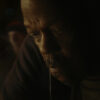
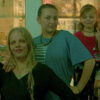
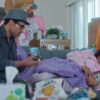
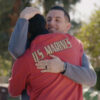
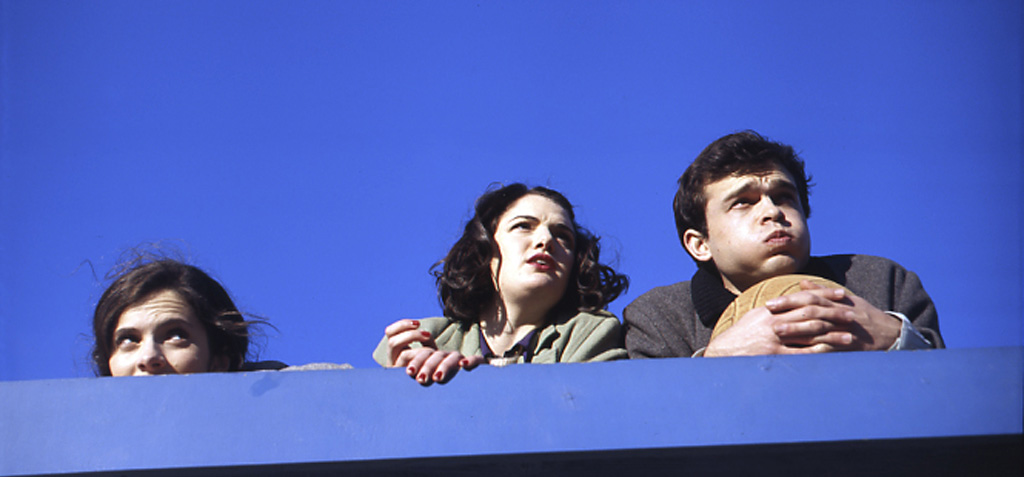
Comments 1